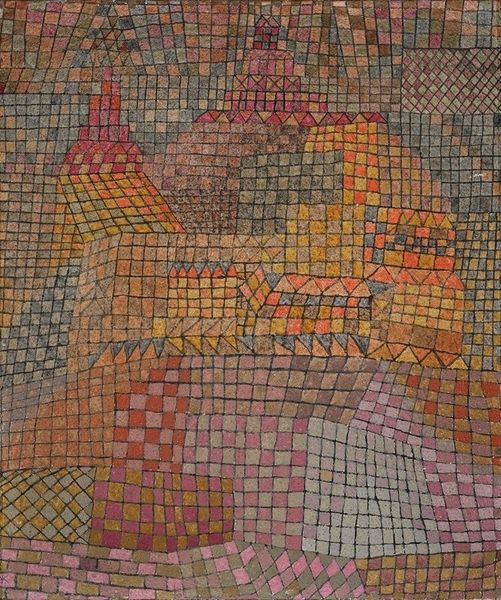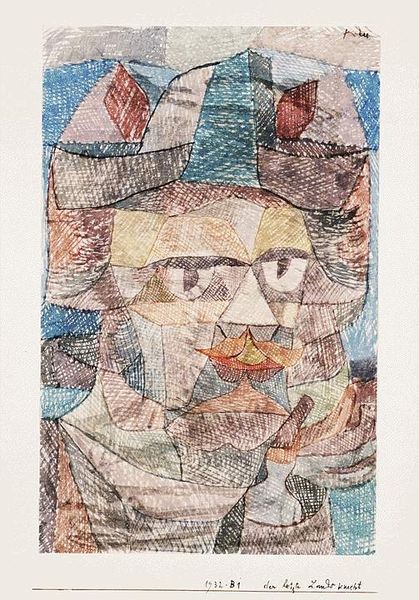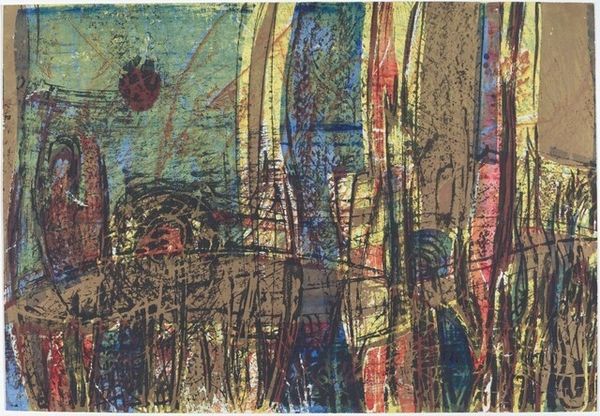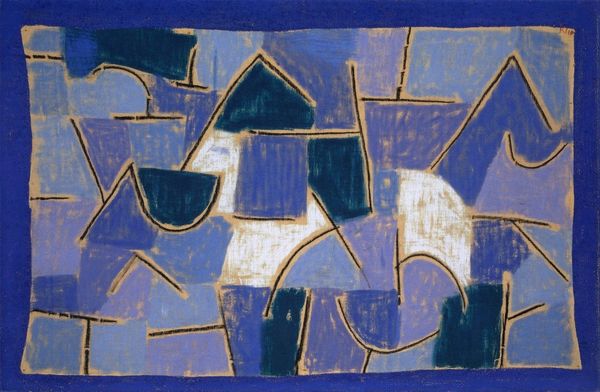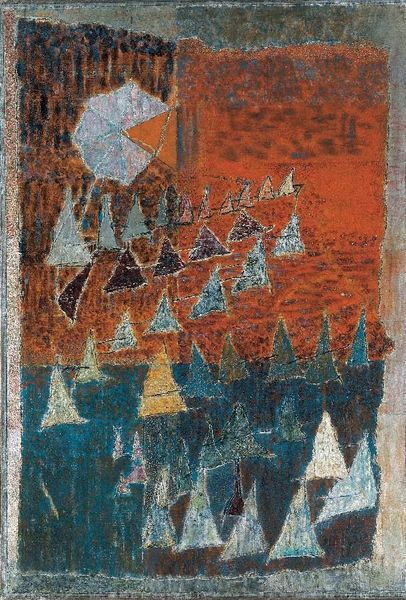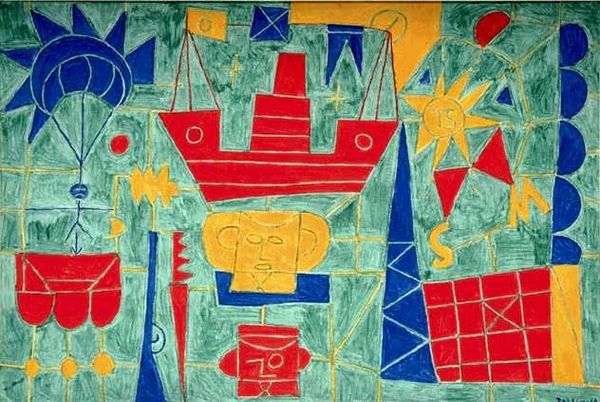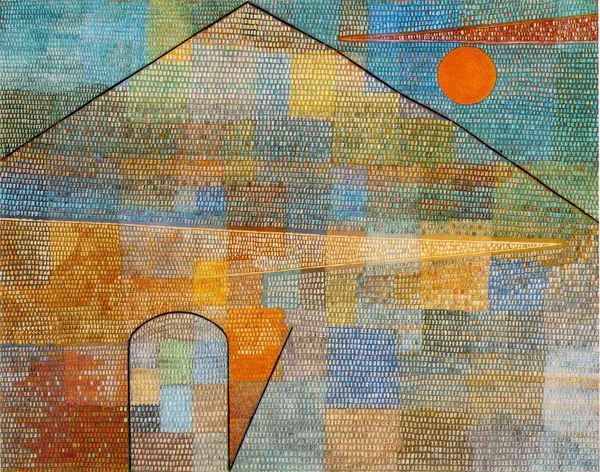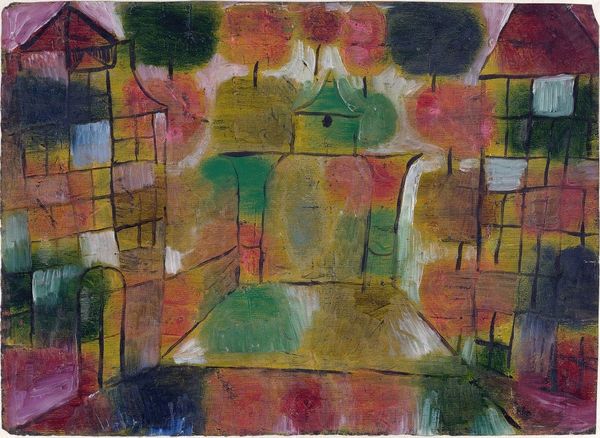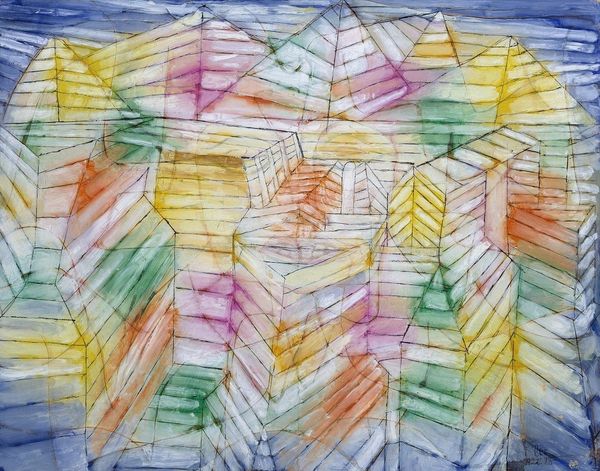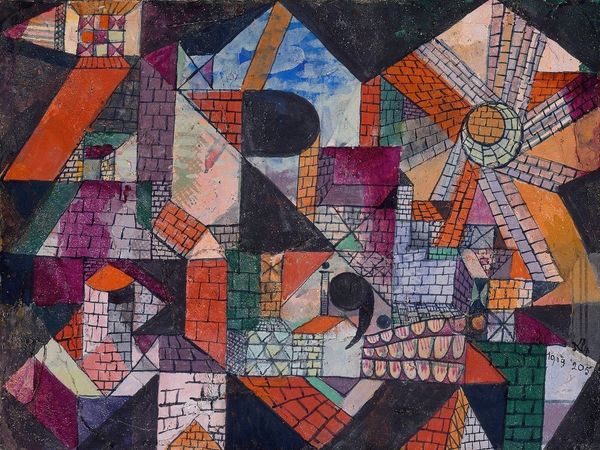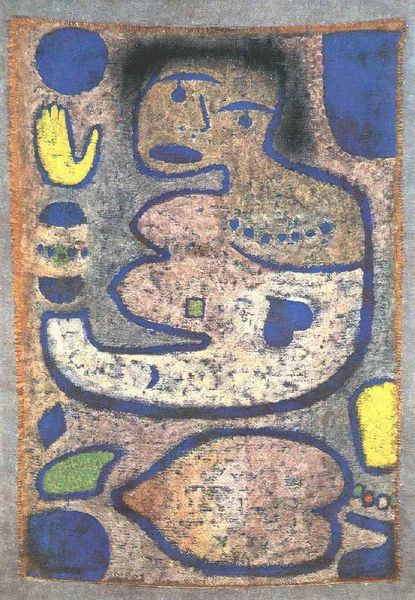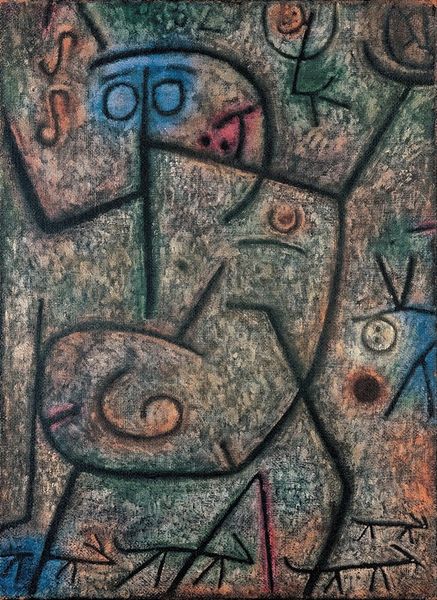
drawing, watercolor
#
drawing
#
cubism
#
watercolor
#
geometric
#
abstraction
#
cityscape
#
modernism
Dimensions: image: 43.5 x 64 cm (17 1/8 x 25 3/16 in.) support: 48.5 x 67.3 cm (19 1/8 x 26 1/2 in.)
Copyright: National Gallery of Art: CC0 1.0
Curator: Paul Klee's "Dredger and Sailboat," made in 1931 using watercolor and drawing techniques, offers a fascinating look at the intersection of industry and nature through a cubist lens. Editor: It’s quite captivating. Immediately, I’m struck by the textile-like quality—the almost woven effect created by the myriad small, square strokes. There's a remarkable commitment to detail and evident labor. Curator: Absolutely. Thinking about the context of its production, the labor involved is critical. This detailed, almost pointillist style was painstaking. I see Klee exploring industrial progress and its influence by including the steam engine, yet also retains imagery of nature's sailboat in order to call on ideas of competition or evolution. Editor: Yes, those juxtaposed images definitely seem loaded with symbolic tension. Triangles traditionally evoke aspiration and spirituality while the solidity of geometric blocks in Klee's steamers feels almost brutally modern, and I am wondering if that brutal modernity threatens these gentler symbols, right? Curator: A good point. There’s this dialogue happening through the very materials. Watercolor lends a fluidity, challenging the mechanization and supposed permanence of industry; Klee makes the industry feel almost as intangible as clouds in the sky, really playing with our expectations of material strength and industrial progress. It feels transient even as a new world is built with great intensity of labor. Editor: And within the visual language, look at how he subverts traditional associations. The dredger, with its dark, rigid lines and imposing chimney, could signify progress, but Klee uses gentle coloration to blend the man-made vessel into a harmony with nature, an intentional move to diffuse the iconographic intensity. I’m even wondering if those triangles represent the fading past! Curator: You raise some interesting ideas about intention in the work. His commitment to exploring texture pushes beyond just depicting; it embodies a discourse on value. How we ascribe worth to production, to the environment, to this historical moment. Editor: Klee's artistry goes far beyond the simple arrangement of images. It delivers such symbolic potential in otherwise mundane objects. The whole is remarkably subtle and evocative! Curator: Exactly, and on close inspection, it delivers some insight into process and the value of material culture during a transformative industrial period.
Comments
No comments
Be the first to comment and join the conversation on the ultimate creative platform.
